There are so many worms living inside the earth that it’s impossible to list them all here. That said, there are some worm groups that are larger than others such as the earthworm and the inch worm. While there are more than 4,400 different types of worms, there are 2,700 different types or earthworm alone and more than 1,200 species of inch worm.
Earthworms can be found in just about every corner of the earth. They live in trees, in bark, and under rocks as well as along rivers and near springs, and ponds. Their favorite place to live, however, is in the earth’s rich soil. During the winter months they burrow deep within the earth until the surface warms again during the spring. During the warm summer months, worms stay closer to the tops of soil where they create tunnels to wiggle in and out of. These tunnels are extremely important for plant life as they create a path for water and air, which is essential for the survival of plant life.
Places like China, Australia, Greenland, and the Sahara Desert have their own indigenous species of worms. Besides the Sahara Desert, you won’t find large numbers of worms living in “sandy” areas, especially sandy beaches. The vast majority of worms on our planet can only survive under certain environmental conditions.
Worms have no lungs, so they breathe through their skin. This means that the worm’s environment and skin must be moist at all times. This allows the worm to breathe in oxygen. If the worm’s skin dries out, the worm will die from suffocation. While worms need moisture to survive, too much moisture can be fatal. If too much water is present, it takes the place of oxygen, which will cause the worms to flee to the surface. Once on the surface, worms will be exposed to sunlight. If worms remain in the sunlight for too long, they can become paralyzed.
In addition to needing a moist environment for survival, worms must also remain close to their food supply. Worms feed off of leaves and dead grass, which contain organisms that provide a healthy diet of bacteria, algae, and fungi. Worms feast on dirt as well, especially if they live deeper inside the earth. Worms also eat plants, fruits and vegetables.
Although you cannot see them, believe it or not, worms do have mouths. The worm’s mouth is actually big enough and powerful enough to grab a leaf and drag it around. They also have a pharynx, esophagus, crop, gizzard and intestine. When the worm eats its food, it pulls the materials into its mouth with the help of the pharynx and its prostomium (also called acron). This creates a suction motion. This suction motion aids in helping the worm consume large amounts of food in a sort amount of time. The gizzard grinds the food. Worms eat so much that they typically produce excrement equal to their own weight every 24 hours.
The worm’s moist sustenance rich environment plays an extremely important role in reproduction as well. Worms prefer to mate and reproduce in warm moist soil, away from the light.
About the Inch Worm
An inch worm is the larvae of moths of the family Geometridae (phylum Arthropoda, class Insecta, order Lepidoptera). This large, widely diffused group has more than 1,200 species indigenous to North America. Some inch worms (also “inchworm”) are considered average while others are considered extraordinary. Inch worms do, however, have many common characteristics. They have smooth, hairless bodies, and they typically grow up to one inch in length. Their colors run the gamut from brown and black to bright green.
Also referred to as loopers, measuring worms, and spanworms, inch worms have three pairs of legs at the front end and two to three pairs of prolegs or larval abdominal appendages at the rear. Inchworms travel by drawing their hind end forward while gripping the earth with its prolegs. They have the ability to stand erect and motionless when poked or prodded in any way.
Much like spiders, some inch worms have the ability produce thin delicate lines. In some cases, these thin lines are made of silk. It just so happens that one of the most destructive types of inch worms, called cankerworms, produces soft silk threads as they drop from trees to evade predators. Also called measuring worms, cankerworms vary in color, but their bodies consist of long horizontal stripes. Cankerworms feed on shrub foliage and tree foliage. These creatures like to hang out in apples, elms, oaks, lindens, sweetgums, and a wide variety of other shade and fruit trees.
Another type of inch worm, also called Looper and Cabbage Looper, overwinters as green to brown pupae tightly wrapped in cocoons (not webs) of white thread. In the spring, the adult moth emerges. The adult lays its eggs, typically on the surface of leaves. Once the larvae emerge, they feed for two to four weeks. Once they’ve had their fill, the larvae spin cocoons similar to the ones used during the overwinter process. The larvae prefer vegetable gardens and they eat a variety of crops including: celery, cabbage, cauliflower, radishes, Brussels sprouts, beans, parsley, broccoli, potatoes, tomatoes, and peas.
Unfortunately, larvae eating habits cause massive destruction to food crop foliage, by eating holes in the leaves. There are several; ways to control these types of inch worm infestations. Trichogramma wasps are natural predators as well as birds, yellow jackets and paper wasps. They are also controlled by natural diseases and parasites. “Wilt disease” causes the worms body to rot. This usually happens late in the season. “Bacillus thuringiensis,” a wilt pathogen, is available to gardeners to help control infestations.
All About Worms is always free, always reader-supported. Your tips via CashApp, Venmo, or Paypal are appreciated! Receipts will come from ISIPP Publishing.




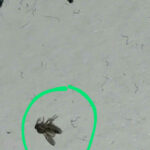
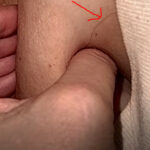
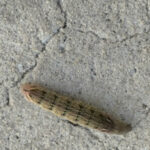
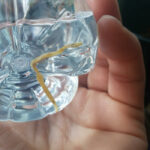
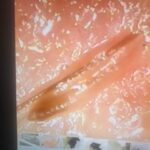
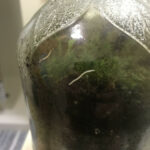
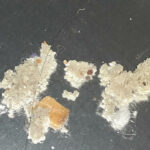


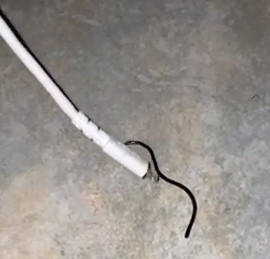


I have this worm that is deep orange with black legs they love my passion vine. How can I get rid of them?
I have many potted plants on patio….when working the soil in a pot that had nothing growing in it, with the intention of planting flowers there, I found many worms in the soil. The were about 3/4 to 1″ long and thick bodies, that curled up when brought to light. Anyone know what these are?
I had cumin seeds and when I wanted to ground them i found out that they made worms , I don’t know if I just threw every thing or keep them and ground them together .
Thank you for your response
I am finding worms that are in a tight circle in last year’s soil that I used for vegetables. The worms are round the size of a nickle, gray to beige. I was going to prepare the soil and add other enrichments in it and plant again. Are those worms safe?
Tiny. Yellowish dot on one end seen in my life I cannot remember!
I am finding worms in my house. They are about 3/4″ to 1′ long. they have segmented bodies with hair like legs the full length of their body, and they have a split tail. They are brownish, and when I find them they are usually dried up.I don’t know how they get into the house. but I find them in every room.
it is a white worm, looks like a slug with black dots all over it about 1 1/2 ” long . what is it
I live in western ny usa.after a couple days of rain I found a worm on the lip of a house plant that I have outside.it is about as big around as a human hair about 7-9 inches long,and is black except for the head and tail which are a tan or light brown?I took some pictures but it is hard to make out.what is it and is it harmful to my plants and veggies?if so how do I get rid of it.